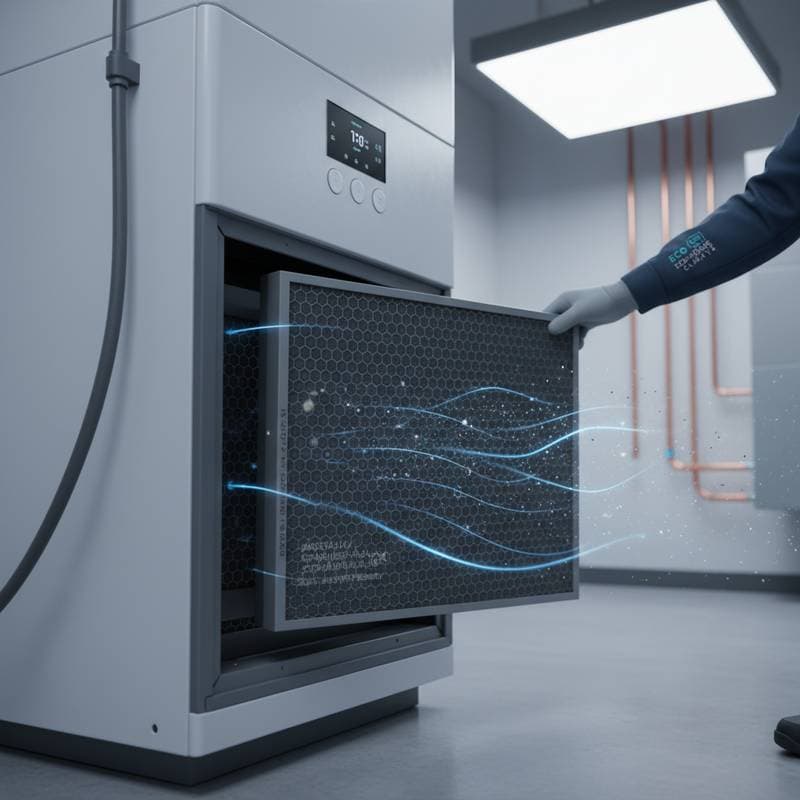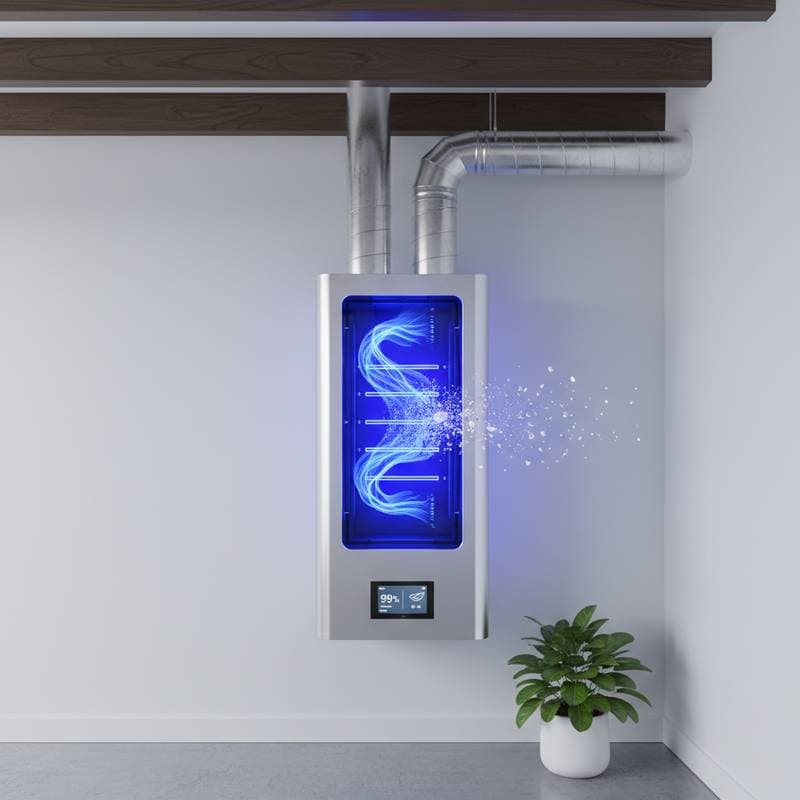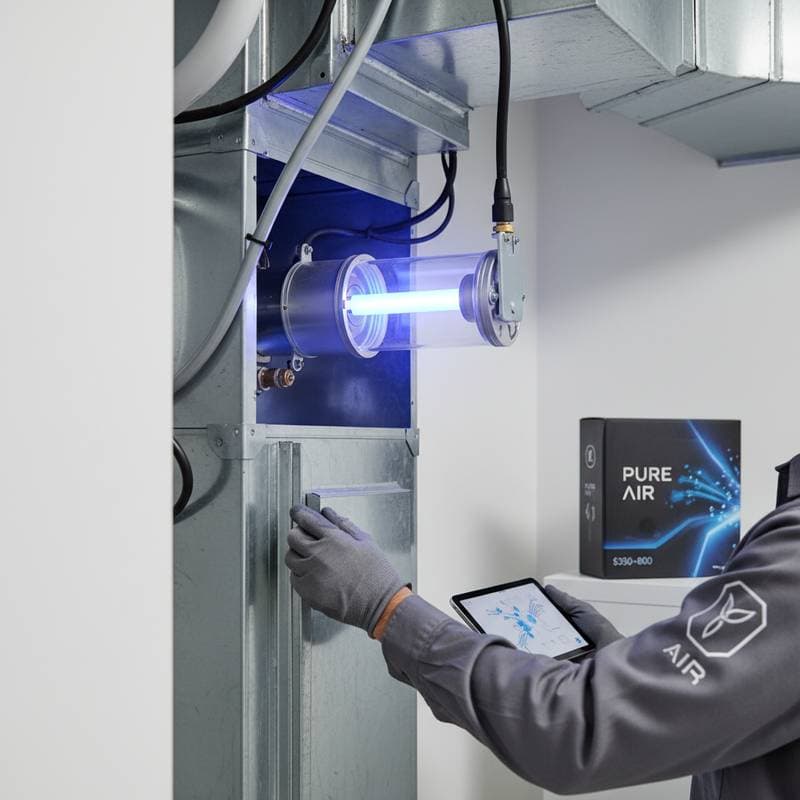Boost Indoor Air with 89% Pathogen Kill by 2025
Indoor air quality ranks among the primary concerns for homeowners seeking comfort and health. Seasonal allergies, airborne viruses, and accumulated dust can compromise the freshness of home air. Fortunately, emerging HVAC technologies, such as UV-C air purifiers, enable homeowners to secure cleaner and safer environments. Projections indicate these systems will deliver an 89% pathogen kill rate by 2025, reshaping approaches to indoor air sanitization. This guide explains essential details to help maintain cleaner air and promote family well-being.
What Are UV-C Air Purifiers?
UV-C air purifiers employ ultraviolet light from the C wavelength range to eliminate microorganisms. As air flows through the device, the UV-C light disrupts the DNA structure of bacteria, mold spores, and viruses, halting their ability to multiply. This method, known as photodisinfection, thoroughly sanitizes air within the HVAC system.
In contrast to conventional filters that merely capture particles, UV-C purifiers eradicate them at a molecular level. They complement existing filtration systems rather than replace them. Proper installation yields significant reductions in airborne pathogens and odors, resulting in fresher indoor air.
How UV-C Technology Improves Indoor Air Quality
UV-C air purification extends advantages far beyond basic cleanliness. These systems address microscopic hazards that evade standard filters, safeguarding homes from elusive contaminants.
Key health and comfort enhancements include the following:
- Reduced airborne pathogens: UV-C light deactivates bacteria, viruses, and mold spores to prevent dissemination.
- Cleaner HVAC components: Microbial accumulation on coils and ducts diminishes, allowing the system to operate with greater efficiency.
- Fewer odors: UV-C light eliminates germs and organic matter responsible for unpleasant smells.
- Better allergy control: Decreased pathogen levels reduce triggers for asthma and allergies.
Homeowners often report noticeable improvements in respiratory health and overall air freshness after integration.
Common Signs You Need Air Sanitization
An HVAC system may appear operational, yet indoor air might conceal contaminants. Recognize these indicators that suggest the value of adding a UV-C air purifier:
- Persistent musty or stale odors throughout the home
- Frequent allergy or respiratory issues affecting family members
- Visible mold growth near vents or inside the HVAC unit
- Rapid reaccumulation of dust despite regular cleaning
- Recurrent illnesses circulating within the household
Upon observing these symptoms, consult a professional technician. They can conduct air quality assessments and propose tailored purification options.
The Future of Air Sanitization Technology
Progress in air purification accelerates steadily. Developers now engineer UV-C systems for seamless HVAC integration, providing comprehensive whole-home protection. By 2025, these innovations promise up to 89% pathogen reduction, positioning them as premier solutions for residential air sanitization.
Such efficacy translates to superior air quality with minimal upkeep. Pairing UV-C purifiers with high-efficiency filters and consistent HVAC servicing creates a robust barrier against airborne threats. Future models may incorporate enhanced durability and energy savings, further appealing to discerning homeowners.
Installing a UV-C Air Purifier: DIY or Hire a Pro?
Homeowners can manage certain preparatory tasks independently:
- Evaluate and select a purifier matched to the home's square footage and airflow needs.
- Perform regular filter replacements or cleanings to sustain optimal airflow.
- Ensure vents and registers remain free of obstructions and debris.
Professional expertise proves essential for core installation steps:
- Positioning the UV-C lamp within the HVAC system for effective exposure.
- Securing electrical connections to meet safety standards.
- Verifying containment of UV-C light to prevent any escape into living areas.
- Conducting performance tests to confirm operational integrity.
Engaging certified technicians minimizes risks and maximizes system longevity.
Key Factors Affecting UV-C Air Purifier Cost
Several elements influence the overall expense of UV-C air purifiers:
- System size: Homes with greater volume demand larger units or additional installations, elevating costs.
- Integration method: In-duct HVAC models surpass portable units in price due to customization requirements.
- Brand and features: Premium options with monitoring sensors or automated controls command higher premiums.
- Installation complexity: Challenges in older systems or confined spaces raise labor fees.
- Maintenance needs: Periodic bulb replacements and inspections contribute to ongoing expenses.
Budget-conscious buyers should weigh initial investment against long-term savings in health and energy efficiency.
Frequently Asked Questions
How effective are UV-C air purifiers at killing germs?
Properly installed UV-C air purifiers neutralize up to 89% of airborne pathogens. Results vary based on exposure duration, airflow velocity, and upkeep routines. Regular maintenance ensures sustained performance.
Are UV-C air purifiers safe for my home?
Yes, provided professionals handle installation. The UV-C light remains enclosed within the HVAC ductwork, avoiding direct contact with occupants or pets.
Do I still need air filters if I have a UV-C purifier?
Yes, filters remain crucial. They trap larger particulates like dust and pollen, while UV-C targets microbes. Combining both yields comprehensive air protection.
How often should the UV-C bulb be replaced?
Bulbs typically endure one year of continuous operation. Technicians assess output during service visits and replace as necessary to preserve efficacy.
Can UV-C purifiers help with odors?
Yes, by dismantling organic compounds that generate smells. This action promotes a consistently fresh indoor atmosphere.
Achieve Lasting Indoor Air Protection
Integrating UV-C air purifiers equips homes with advanced defense against invisible threats. Homeowners gain peace of mind through enhanced health, reduced allergens, and optimized HVAC performance. Schedule a consultation with a qualified specialist to explore integration options suited to your residence.





